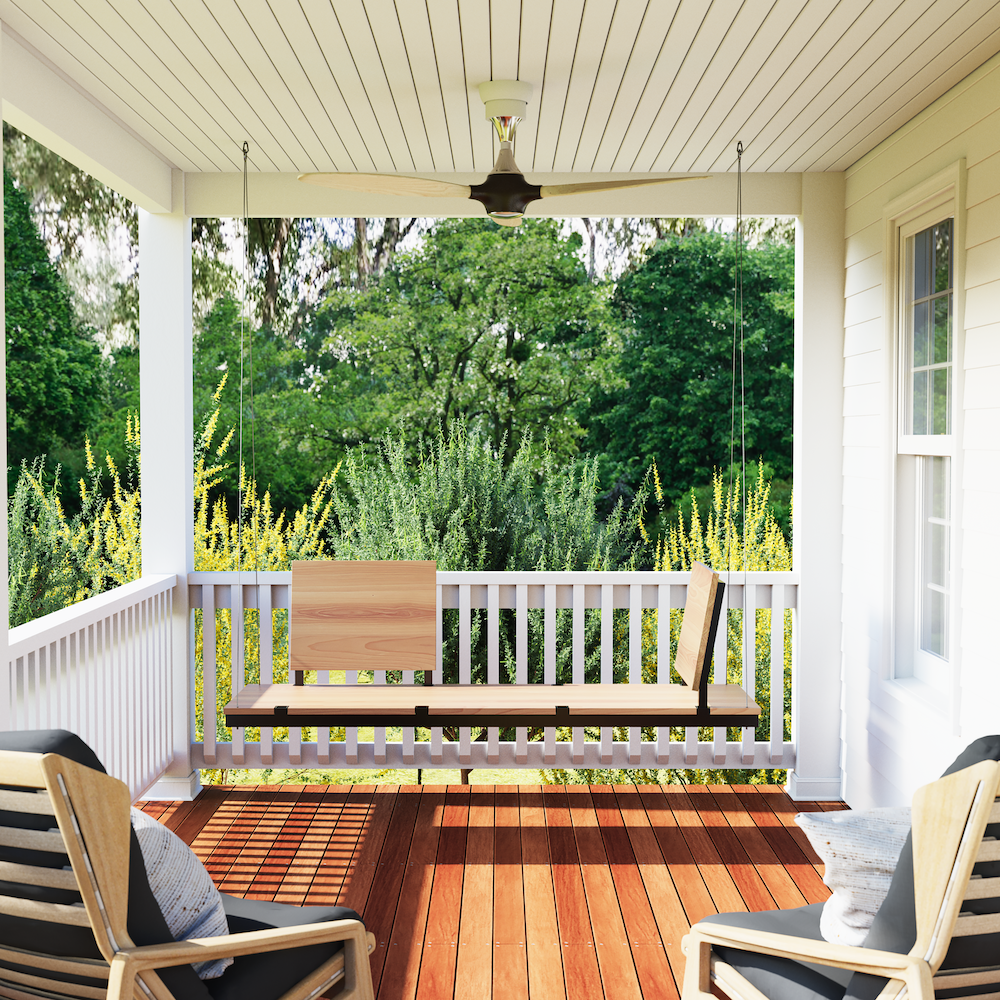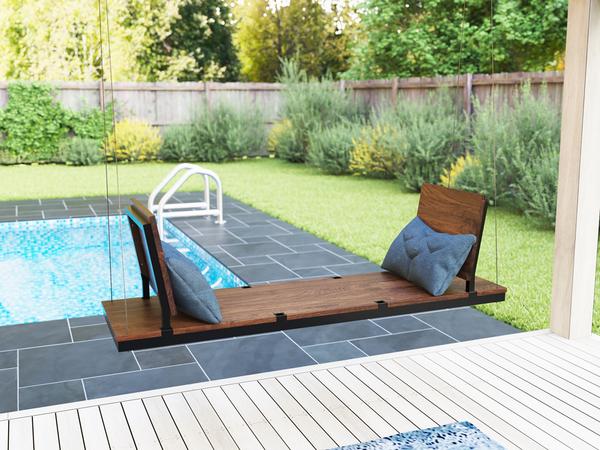
The memories made around a porch swing last a lifetime—and a high-quality wooden swing can stay in your family just as long.
If you’re considering purchasing a porch swing for your family to enjoy, you might be wondering how long you could expect a wooden porch swing to last?
A high-quality wooden porch swing should last about 15 to 20 years — though there are plenty of examples that they last much longer. The World’s Largest Covered Porch Swing crafted from wood and metal in Hebron, Nebraska is still going strong nearly 40 years after its construction in 1985.
But perhaps, the best testament of the longevity of wooden porch swings comes from your own experience. There are countless stories of childhood memories created around high-quality porch swings that are still in the family today. Many last for generations.
The emphasis here is on high-quality. The most important factors to the life expectancy of a porch swing are its materials—most notably the type of wood used for its bench and type of frame/suspension system—as well as proper upkeep to maintain its structural integrity.
This guide covers the longevity of types of wood for a porch swing, metal framing and suspension considerations, and best maintenance practices to ensure that your wooden porch swing lasts for years to come.
Best Material for an Outdoor Porch Swing

There are several types of materials used for outdoor porch swings. The most common are plastic, metal, wood, or wicker. Plastic and metal options tend to withstand rain and snow, while wicker is known for being lightweight and fairly easy to clean. But if your goal is for your porch swing to last a lifetime, then real wood porch swings are the best option.
Cypress, cedar, teak, and pine are the most popular types of wood used for outdoor swings. But when it comes to staying-power, only certain species of wood are suited to withstand the elements in the long run.
Wooden porch swings crafted from cypress or cedar can last generations. On the other hand, low grade woods like pressure-treated pine, whitewood, and poplar tend to warp quickly and decay with time.
Here is a cheat sheet for selecting from some of the most popular wooden porch swing materials on the market.
Cypress:
- Cypress wood porch swings lasts 20+ years. Organic Swings offers a Lifetime Warranty because of the durability of its cypress wood swing.
- Produces its own naturally occurring protectant called cypressine, which shields the wood from warping from heat, decay, rot, and insects.
- Suitable for both warmer regions and cooler/wetter climates.
- Among the most environmentally-friendly wood selections for a porch swing.
- Characterized by intricate wood-grain patterns found in only the highest-grade lumber. It also accepts wood stain well.
Cedar:
- Can last 15-20+ years.
- Natural oils make it resistant to rot and insect damage.
- Suitable for both warmer regions and cooler/wetter climates.
- Characterized by its red color when it is new but fades to a silvery-gray or brown as it ages. It also accepts wood stain well.
Teak:
- Experts estimate teak furnishings can last more than 100 years outdoors because of its ability to withstand insect damage and extremes of heat and cold.
- Considered the most premium wood choice, and therefore it’s typically the most expensive option.
- Not as eco-friendly as cypress or cedar. Exotic woods such as teak are sourced by clear-cutting tropical forests.
Pine:
- Typically lasts a few years or less.
- Has a tendency to warp from the elements since it has no natural defenses like oils found in cypress or cedar. It is not recommended to hang pine swings in an uncovered area since the wood is likely to wear quickly from exposure.
- The cheapest wood for a porch swing.
- Requires outdoor paint for protection. Note: Stain works on pine wood, but tends to appear blotchy and is best if you’re going for a more rustic look.
Wooden Porch Swing Frames & Suspension

Some porch swing frames are crafted from the same type of wood as its bench, but there is added longevity in selecting a galvanized metal frame.
The cypress wood bench pieces of Organic Swing are set on a lightweight, steel frame and suspended from galvanized, aircraft-grade steel cable for a distinctively modern look and added strength and longevity. Plus, the frames are powder-coated to provide maximum durability against scratching and everyday wear.
Galvanized suspension cables are the way to go if you want to prevent rust because it has a layer of zinc or magnesium that protects the iron from being exposed to water or oxygen.
If your porch swing is not suspended by galvanized cable, you’ll need to apply a good metal primer to the chains to prevent rust. Rust corrodes iron and causes it to be thin and brittle. This means that it has a much bigger chance of falling apart and breaking while in use, according to Everything Backyard. It’s highly recommended to safely test to the strength and health of your porch swing chain at least once a year and replace it when you see signs of rust or wear.
Proper Maintenance to Protect Your Wooden Porch Swing

Like all good pieces of wood furniture, proper maintenance is required to extend the life of your porch swing. The good news is that you don’t need to be a carpenter and, in many cases, you don’t need to remove the swing from its mounting — as long as the wood isn’t too rotted out. In most instances, it takes less than an afternoon once a year to keep your wooden porch swing in good condition.
All wooden porch swings should have a protective coating of either outdoor paint or wood stain.
Pine is better painted while hardwearing cypress fares better with stain. Cedar and cypress have natural oils that prevent paint from adhering well long-term. High-quality woods take stain better, which requires less future maintenance because paint has a tendency to chip and fade faster.
We recommend using an oil-based sealer with UV protection to protect the wood and prevent it from fading in the sun. Check the label to ensure the sealants, cleaners, or coating is intended to for your porch swing’s type of wood. In general, it is best to avoid teak oils and varnishes because these finishes could damage the wood’s natural oils that keep the wood free from mildew and rot, and less susceptible to insects.
It’s best practice to apply an oil or oil-based sealer once a year or at least once every other year.
There’s no denying the natural beauty and durability of cypress wood porch swings. With proper maintenance, it’s a porch swing material that will provide your family a lifetime of relaxation.



